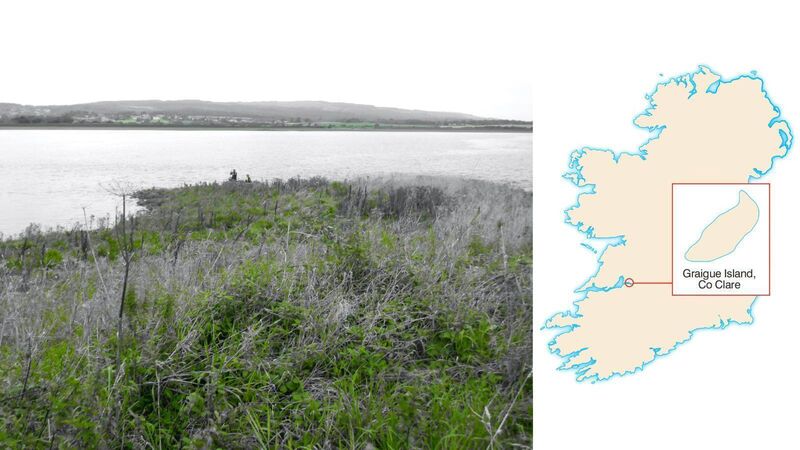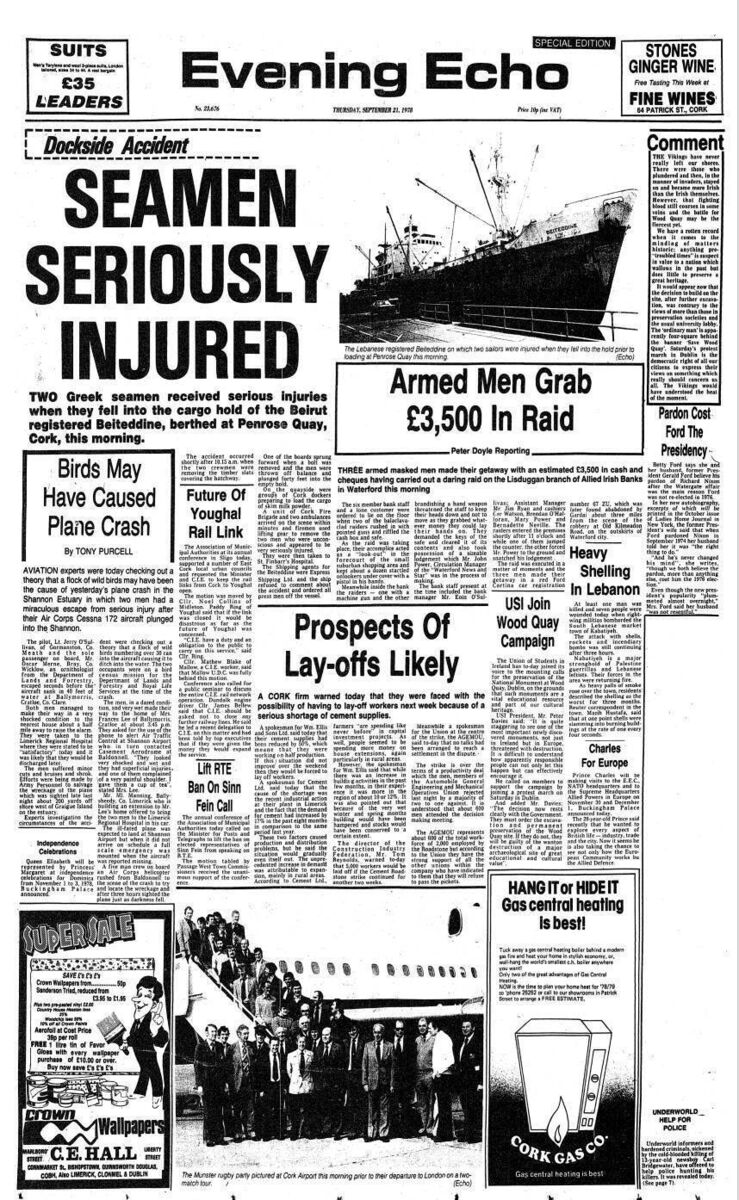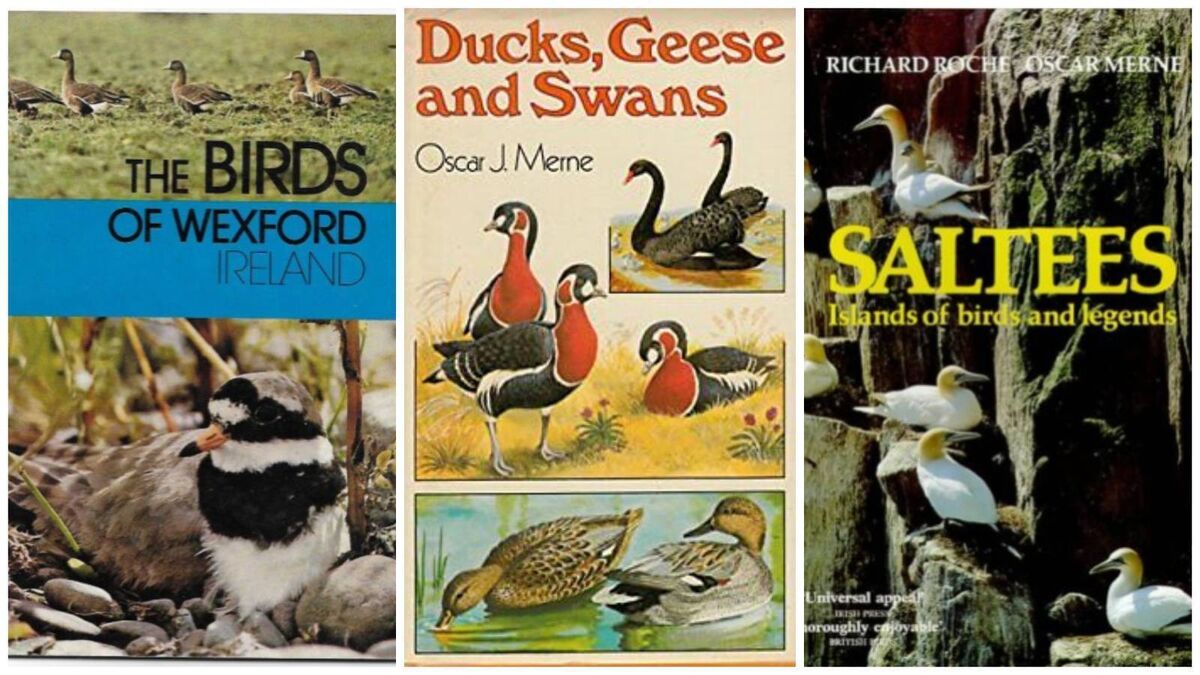Islands of Ireland: Mudbanks, nettles, and a plane crash — Graigue Island in Shannon Estuary

Graigue Island, Shannon Estuary, County Clare. Picture: Dan MacCarthy
The proximity of the Shannon Estuary and the Fergus Estuary to Shannon Airport has meant any plane that found itself in difficulty might end up crashing into either of the estuaries. This has occurred at least three times over the years. And with dozens of islands in each of the estuaries the chances were that the crashes would land on or near some of those islands.
The biggest crash involved a TWA flight en route from Paris to New York via Shannon which crashed at Inishmacnaghton in 1946 with the loss of 13 lives.
A third crash involved an Air Corps Cessna 172 which crashed into the river at Graigue Island in 1978 — the pilot and a famous ornithologist were on board.
The island is one of the nearest to Limerick City along with Battle Island and Sod Island. It is the first island that boats leaving Limerick City bound for the Atlantic Ocean would encounter on the starboard side. It is primarily composed of river silt deposited on boulder clay and furnished with a thriving vegetation in the form of nettles. Suffice it to say it would not make it to the top 10 of anyone’s favourite Irish islands.

The Cessna crashed in good conditions on a September afternoon just after 2pm. Investigators described a miraculous escape by the two occupants after the plane had crashed probably due to contact with a flock of birds, they assessed.
The pilot, Jerry O’Sullivan, and the ornithologist Oscar Merne, who was working for the Department of Lands and Forestry, escaped the Cessna just seconds before it sank in 12 metres of water not far from Cratloe, County Clare.
According to a newspaper report “both men managed to make their way in a very shocked condition to the nearest house about a half a mile away to raise the alarm”. They were later discharged from hospital having suffered some cuts and bruises. Army personnel later attempted to retrieve the plane from the mudbank around Graigue Island.

Oscar Merne would go on to a distinguished ornithological career. He was assistant on Éamon de Buitlear’s famous and was also one of the founders of the precursor of BirdWatch Ireland, The Irish Wildbird Conservancy.
His entry on the Dictionary of Irish Biography reads: “From early on, Merne knew that the accurate recording of bird species and their habitats was vital to any conservation effort. His ability to assess the number of birds in a vast flock, often in poor visibility, would make him legendary in his field.”

Merne wrote several books including , ; and .
As the name of the island is not possessive it stands out as an anglicisation. A meaning for the Irish ‘gráig’ is ‘cattle-steading’. In the 1930s Graigue island was used to graze cattle but on a recent trip there it was obvious that this practice had been discontinued. The word ‘graigue’ occurs in at least 11 townlands or towns around the country including Graiguenamanagh, County Kilkenny. It also refers to ‘valley’.
The one-acre Graigue Island has several nearby hazards to boatmen which are studiously avoided: Crawford Rock; Kerry Rock; The Whelps; and The Scarlet are a few of the rock outcrops and mudbanks that spell danger to boats. It has been suggested as a point for construction of a tidal barrier to protect Limerick City from the effects of global warming, such as is sorely needed in Cork Harbour also.
In the late 19th century Graigue Island was the boundary for fishing of salmon and trout between August 1 and February 11 and which began at the Lax Weir in Limerick City. Anyone breaching the law was penalised. A legal advisory in the Dublin Gazette warned: “Any person offending against the above bye-law shall forfeit and pay for each offence a sum of four pounds, and all nets used contrary thereto shall be confiscated”.
: No ferry. Inquire at Bunratty jetty or kayak from there.
: Evening Echo, 21/09/1978







